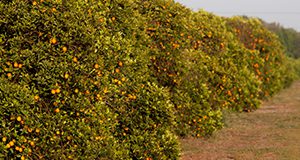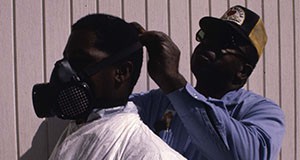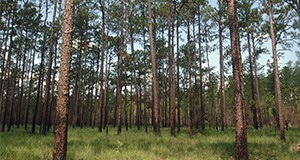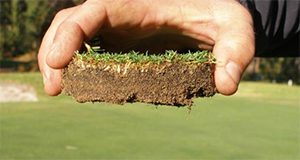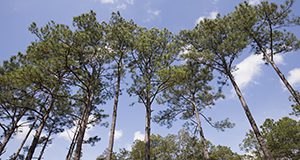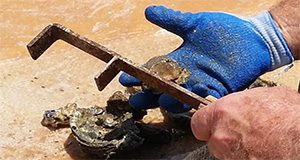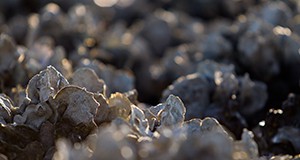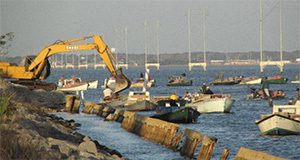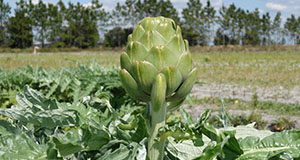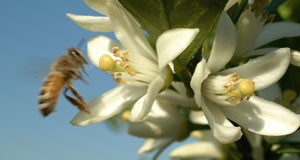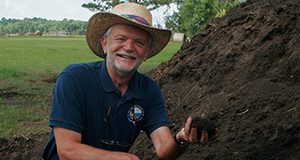After years of extensive research from across the world, we still do not have a cure for HLB; however, we have learned a lot about this disease, the plant’s response to the disease, and the disease vector. Based on scientific and observational information gathered in the last decade, a number of tools and strategies are currently available for growers to maintain the health and productivity of HLB-affected trees. This four-page fact sheet will shed light on these currently available horticultural inputs and practices that can be implemented immediately by growers to maintain and improve citrus tree health.Written by Tripti Vashisth and published by the Horticultural Sciences Department.
http://edis.ifas.ufl.edu/hs1288
Category: Agriculture
Citrus Disorders and Physical/Chemical Injuries
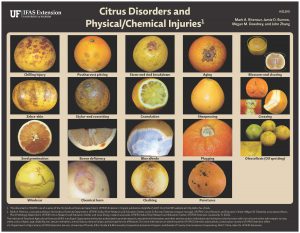
This new one-page Citrus Identification fact sheet illustrates different disorders and injuries that affect citrus. Written by Mark A. Ritenour, Jamie D. Burrow, Megan M. Dewdney, and John Zhang and published by the Horticultural Sciences Department.
http://edis.ifas.ufl.edu/hs1290
Citrus Nutrition Management Practices
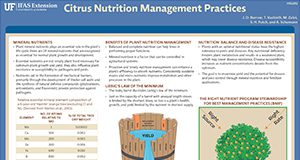
A new two-page fact sheet has been published by the Horticultural Sciences Department and the UF/IFAS Citrus Research and Education Center about citrus nutrition management practices. It was written by J.D. Burrow, T. Vashisth, M. Zekri, S.H. Futch, and A. Schumann.
http://edis.ifas.ufl.edu/hs1292
Florida Fertilizer Usage Statistics
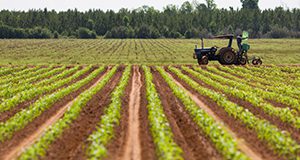
Nutrient applications are often required to meet Florida’s demand for agricultural and horticultural commodities, but often those applications occur in close proximity to water bodies. In order for scientists, policy makers, and citizens to make decisions regarding nutrient issues in Florida, it is important to first understand which markets contribute to Florida’s fertilizer consumption. This three-page fact sheet explains Florida’s fertilizer usage statistics. Written by T.W.Shaddox and published by the Environmental Horticulture Department.
http://edis.ifas.ufl.edu/ep541
Worker Protection Standard: Respirators
On November 2, 2015, the EPA revised the WPS, making significant changes to the rule’s requirements. Most of the revised provisions became effective January 2, 2017; there are four provisions that are delayed until January 2, 2018. This four-page document will address respirator use under the revised WPS. Written by Frederick M. Fishel and published by the Agronomy Department and the Pesticide Information Office.
http://edis.ifas.ufl.edu/pi272
Calibrating Time Domain Reflectometers for Soil Moisture Measurements in Sandy Soils
The UF/IFAS Plant Science Research and Education Unit (PSREU) in Citra, FL developed an in-laboratory calibration protocol for CS616 TDR sensors for sandy soils, which are typical of north central Florida. This new 7-page fact sheet discusses the reflectometer, field site, calibration protocol, and calibration coefficients. Written by Tara Bongiovanni, Pang-Wei Liu, Daniel Preston, Johanna Montanez, Courtnay Cardozo, Steven Feagle, and Jasmeet Judge, and published by the UF Department of Agricultural and Biological Engineering, February 2017.
http://edis.ifas.ufl.edu/ae519
Timber Production in a Working Forest Context
Working forests are private forests managed not just for timber production but also for a host of valuable ecosystem services like providing for recreation, maintaining habitat for wildlife, and maintaining a healthy watershed. Timber production is an essential ecosystem good or service that supports a number of important industries and provides jobs in Florida. This 6-page fact sheet summarizes the results of several studies to help forest landowners and other stakeholders understand how multiple-use management affects both timber production and other ecosystem services.
http://edis.ifas.ufl.edu/fr406
Nematode Management on Athletic Fields
Turfgrasses are essential components of many athletic fields, racetracks, and parks. Plant-parasitic nematodes can damage athletic fields by weakening turf root systems and causing turf to pull up during play, which can create dangerous conditions for players. To help keep turf–and athletes–healthy, this 7-page fact sheet written by William T. Crow and published by the Department of Entomology and Nematology explains how to spot and manage a nematode problem in an athletic field.
edis.ifas.ufl.edu/in126
Carbon Stocks on Forest Stewardship Program and Adjacent Lands
Nonindustrial private forestlands in Florida provide many environmental benefits, or ecosystem services. Ecosystem services are benefits from nature that are directly enjoyed, consumed, or used by humans, such as water quality improvement or protection, recreation, biodiversity, and even timber. Another benefit from forests that is gaining interest is their ability to store carbon through the photosynthetic capture of carbon dioxide, a greenhouse gas, in tree, plant, and soil biomass. The carbon dioxide that is stored over the life of a forest, called carbon stocks, is not only important for mitigating greenhouse gas contributions to climate change, but it can also be valued in several markets and incorporated into environmental policy instruments. This 5-page fact sheet was written by Nilesh Timilsina, Francisco J. Escobedo, Alison E. Adams, and Damian C. Adams and published by the UF Department of School of Forest Resources and Conservation April 2017.
http://edis.ifas.ufl.edu/fr384
Pesticide Labeling: Protection of Pollinators
On May 29, 2015, the EPA published its Proposal to Mitigate Exposure to Bees from Acutely Toxic Pesticide Products. This seven-page fact sheet outlines the highlights from this policy and its proposed restrictions, which would prohibit applications of pesticide products that are acutely toxic to bees during bloom where honey bees are known to be present under contract for pollination services. Written by Frederick M. Fishel, James Ellis, and Gene McAvoy and published by the Agronomy Department.
edis.ifas.ufl.edu/pi271
Nitrogen to Potassium Ratios for Florida Golf Courses
Golf course nutrient management programs commonly include application of both nitrogen and potassium. These macronutrients are required by turfgrass in greater quantities than any other element except carbon, hydrogen, and oxygen. This two-page fact sheet explains the Nitrogen to Potassium ratios that are best for golf courses. Written by T.W. Shaddox and J.B. Unruh and published by the Environmental Horticulture Department.
http://edis.ifas.ufl.edu/ep540
Oysters for the Future: Proper Oyster Culling Techniques Matter
The eastern oyster (Crassostrea virginica) provides many important functions in coastal environments, from serving a crucial role in the estuary’s food web to improving water quality for beachgoers and wildlife. Oysters are also a popular food choice for people. At times the commercial industry landings value has topped $8 million annually in Florida. This 2-page facts sheet written by Erik Lovestrand and published by the Florida Sea Grant College Program is one in a series that highlights some of the key ecological and human factors important to the long-term sustainability of this valuable fishery.
http://edis.ifas.ufl.edu/sg143
Oysters for the Future: Oystering Rules, The Whys and Wherefores
The eastern oyster (Crassostrea virginica) provides many important functions in coastal environments, from serving a crucial role in the estuary’s food web to improving water quality for beachgoers and wildlife. Oysters are also a popular food choice for people. At times the commercial industry landings value has topped $8 million annually in Florida. This 2-page fact sheet written by Erik Lovestrand and published by the Florida Sea Grant College Program is one in a series that highlights some of the key ecological and human factors important to the long-term sustainability of this valuable fishery.
http://edis.ifas.ufl.edu/sg144
Oysters for the Future: The Value of Science-Based Management in the Oyster Fishery
The eastern oyster (Crassostrea virginica) provides many important functions in coastal environments, from serving a crucial role in the estuary’s food web to improving water quality for beachgoers and wildlife. Oysters are also a popular food choice for people. At times the commercial industry landings value has topped $8 million annually in Florida. This 2-page fact sheet written by Erik Lovestrand and published by the Florida Sea Grant College Program is one in a series that highlights some of the key ecological and human factors important to the long-term sustainability of this valuable fishery.
http://edis.ifas.ufl.edu/sg145
Parameters for Site-Specific Soil Phosphorus Loss Modeling from Soil Test Data

This four-page fact sheet is part of a series titled Soil Phosphorus Storage Capacity (SPSC) for Phosphorus Risk Assessment and Management. This series is intended for use by those who are interested in management practices and policies that minimize the risk of phosphorus loss from soils. Written by Biswanath Dari, Vimala D. Nair, and Willie G. Harris and published by the Department of Soil and Water Sciences.
http://edis.ifas.ufl.edu/ss656
Production Guidelines for Globe Artichoke in Florida
Globe artichoke (Cynara cardunculus L.) belongs to a genus of thistle-like plants in the sunflower (Asteracae) family and is cultivated for its flower buds. This four-page fact sheet discusses production guidelines for artichoke in Florida. Written by Shinsuke Agehara and published by the Horticultural Sciences Department.
http://edis.ifas.ufl.edu/hs1289
Tissue Testing and Interpretation for Florida Turfgrasses
Tissue analysis offers a precise estimate of a plant’s nutritional status at the time of sampling. Nutrient deficiencies can be detected with tissue analysis before visual symptoms appear. This three-page fact sheet describes the importance of tissue testing and how to interpret the results. Written by T.W. Shaddox and published by the Environmental Horticulture Department.
http://edis.ifas.ufl.edu/ep539
Citrus Flavonoid Effects on Obesity
The increased prevalence of obesity in recent decades has sparked tremendous concern worldwide. A type of phytochemical, called flavanoids, has been shown in clinical trials to provide significan benefits to overall health because of their antioxidant abilities. Flavanoids are especially abundant in citrus species. This two-page fact sheets describes the health benefits of citrus flavanoids. Written by Yu Wang and Laura Reuss and published by the Food Science and Human Nutrition Department.
http://edis.ifas.ufl.edu/fs285
Does Consumers' Awareness Impact Their Purchase Likelihood of Neonic-Free Plants?
Neonicotinoid (neonic) pesticides have been facing intense scrutiny because of their potential role in pollinator insect population declines. Research has shown that insecticide use in general has resulted in $284 million per year in damages to honeybee and pollinator services in the United States. This is especially worrying because food supply would fail to meet increasing global food demand without pollinator insects.
Consumer awareness of neonic pesticides increases the purchase likelihood for plants that are labeled “neonic-free,” and, as consumer awareness of neonics increases, demand for plants may decrease if there is limited availability of neonic-free options. This 5-page fact sheet written by Hayk Khachatryan and Alicia Rihn and published by the Food and Resource Economics Department explains the practical implications for growers, retailers, and policy makers and describes how these stakeholders can benefit from increased awareness of this important new market niche.
edis.ifas.ufl.edu/fe1008
Utilization of Biosolids in Forage Production Systems in Florida
This four-page publication provides basic information about land application of biosolids to pastures and hayfields in Florida. The information contained in this document should be of interest to stakeholders, biosolids managers, students, and scientists interested in topics related to biosolids management practices and the potential benefits and risks associated with biosolid land application. Written by Maria L. Silveira, George A. O’Connor, and Joao M.B. Vendramini and published by the Department of Soil and Water Sciences.
http://edis.ifas.ufl.edu/ss658
